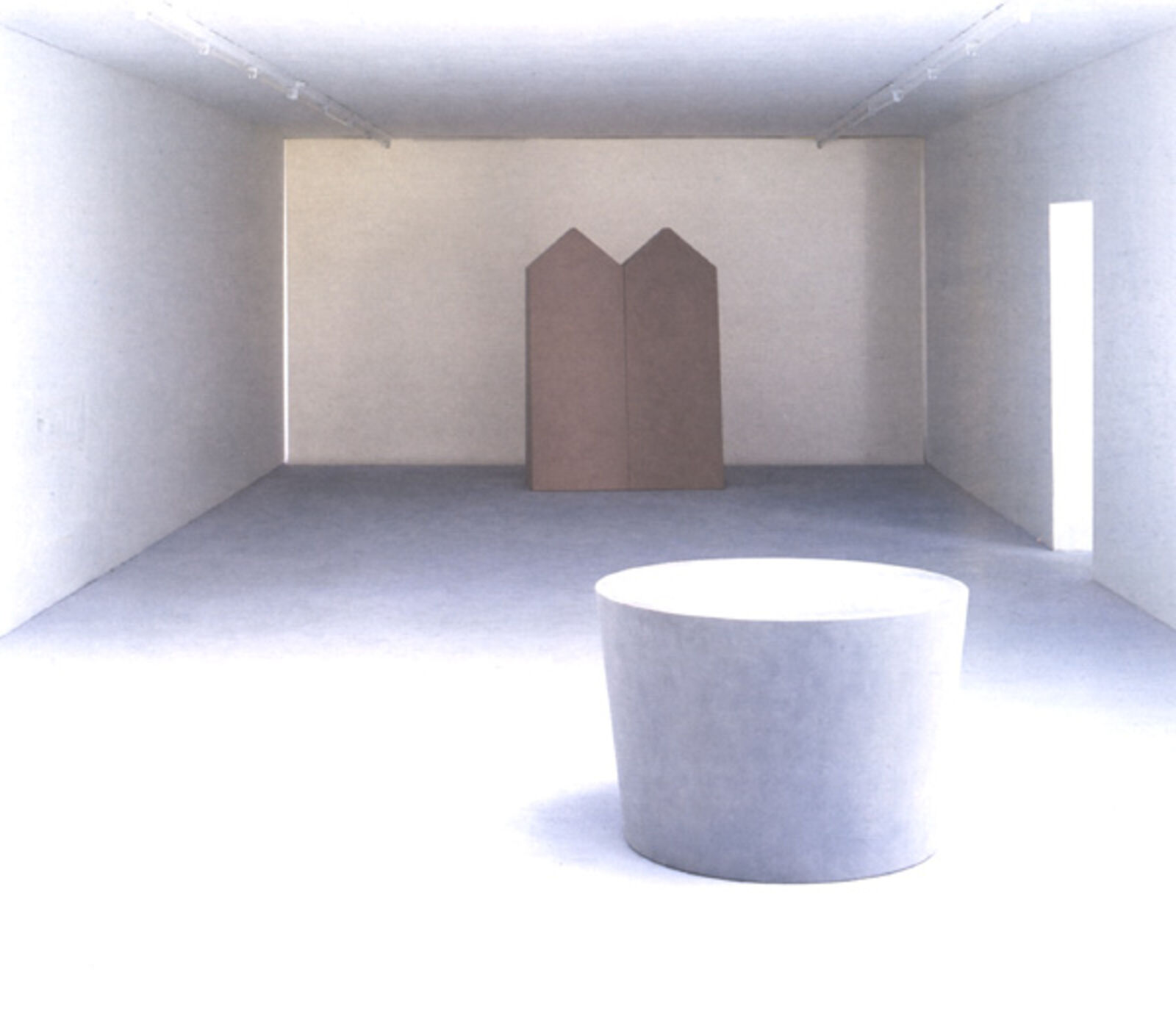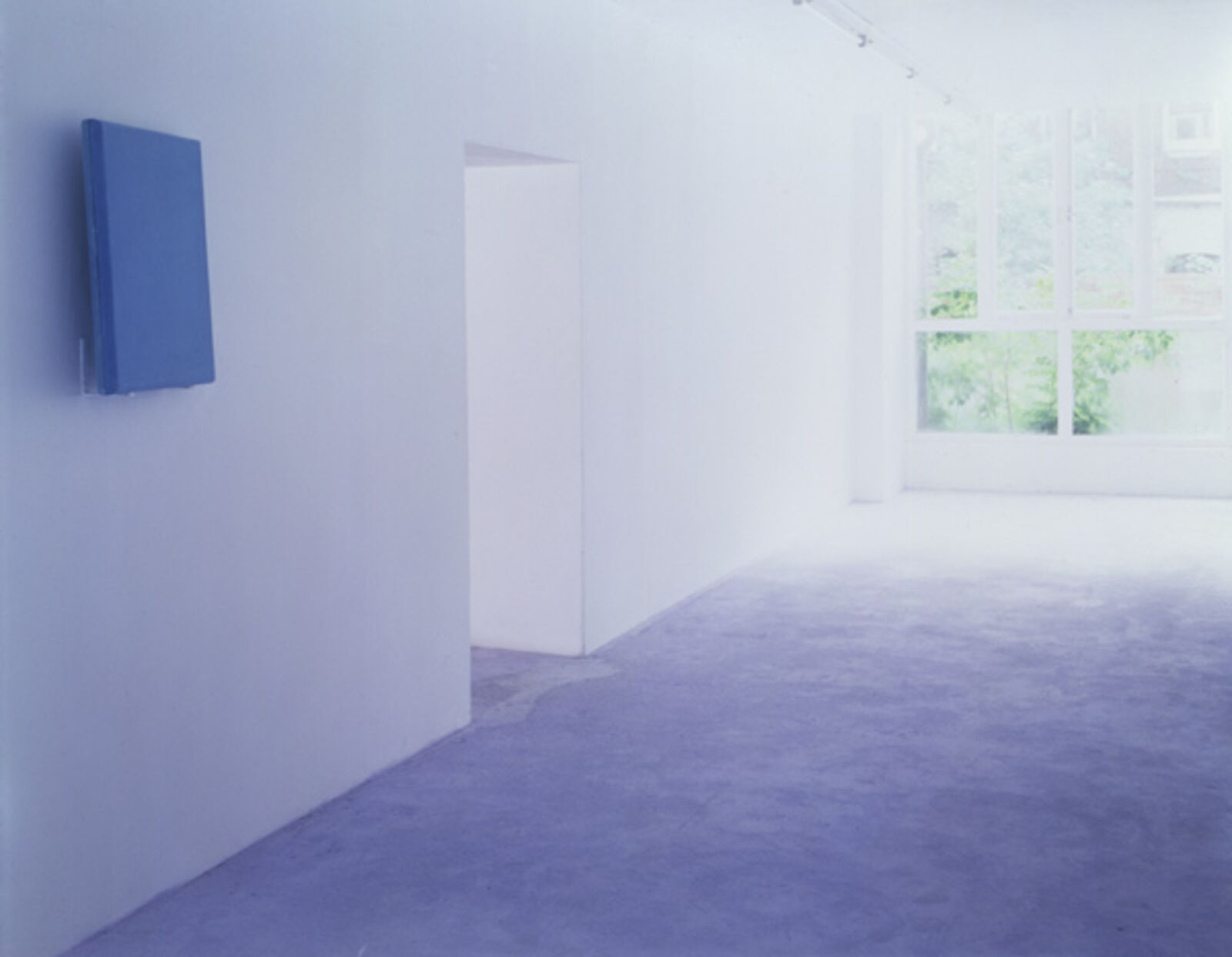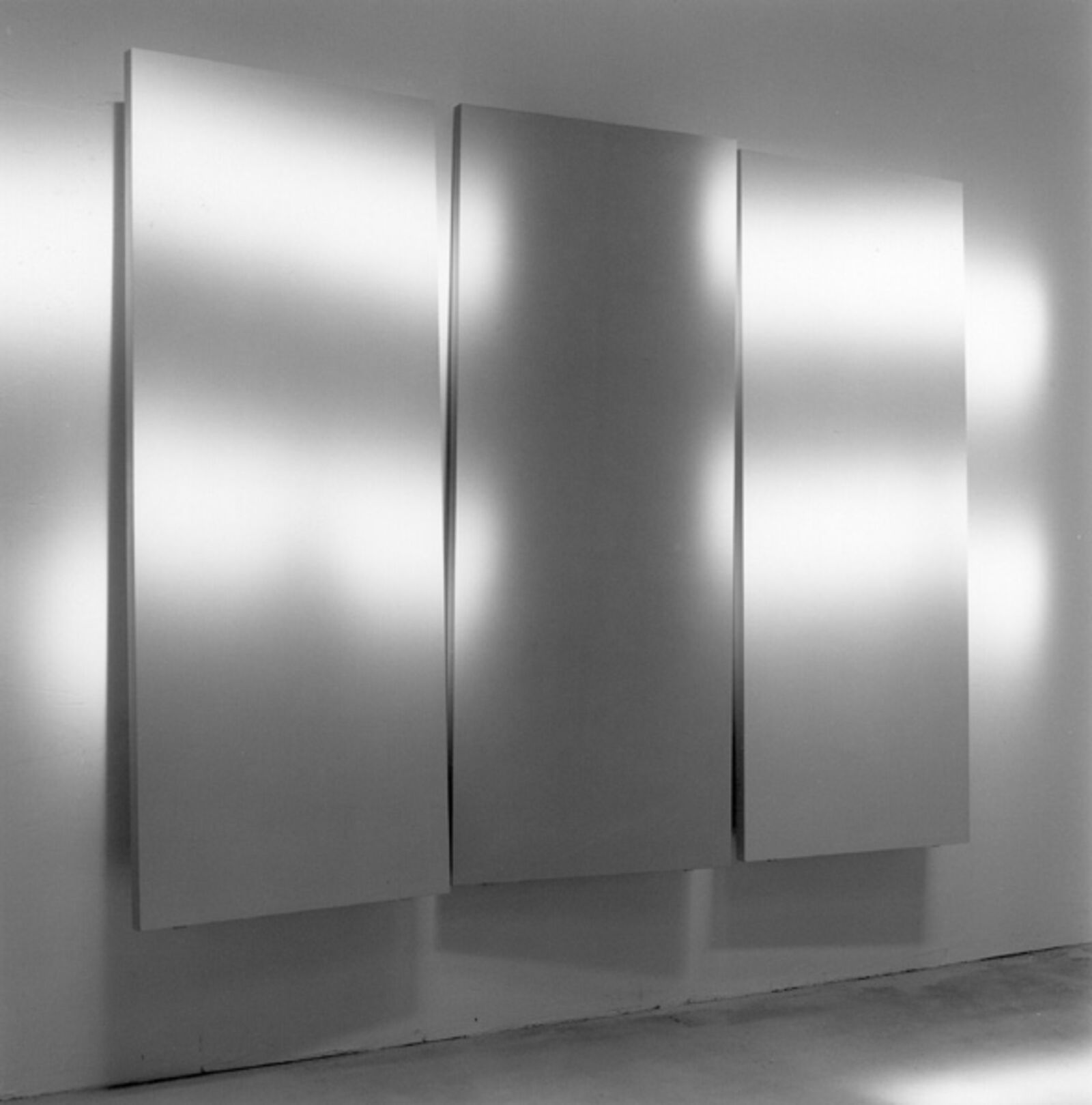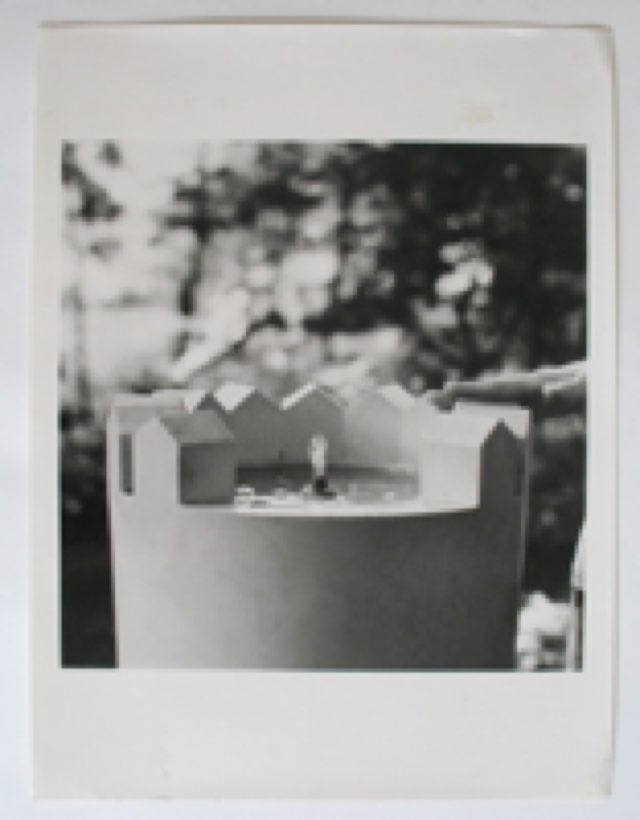Ettore Spalletti "Ettore Spalletti"
12.05–10.06.1989
de Appel, Prinseneiland 7, Amsterdam
de Appel, Prinseneiland 7, Amsterdam

Posa
© Henni van Beek, Amsterdam
© Henni van Beek, Amsterdam

Coppia
© A. Maranzano
© A. Maranzano

Annunziazione
© Henni van Beek, Amsterdam
© Henni van Beek, Amsterdam
‘Hardly any work by the Italian artist Ettore Spalletti (1940) has been seen in the Netherlands so far. In 1986 he made a small fountain for the sculpture exhibition in Sonsbeek park, which cursorily reflected the essence of Spalletti's concerns. The fountain was a stone column which became broader at the top, blue-green in colour, and terminating in a round basin where a jet of water spurted up. A number of little blocks were placed on the circumference of the bowl, looking like little houses. Seen in this way, the basin at once becomes a town square, the jet of water a monumental fountain and the sculpture an architectural maquette. This is in fact the case: the little blocks refer to 'Gruppo della Fonte', a hamlet of four houses close to Spalletti's home town of Pescara in Abbruzzo, where he lives and works, looking out daily upon a valley and a snow-capped mountain. Even though 'Gruppo della Fonte' looks different in reality than the little blocks around the water display, the piece derives very much from his direct visual surroundings. The soft glow of the mountain top appears in his paintings, for example, but it is mainly the pastel colours of the landscape in the early morning and twilight that determine the tones of his paintings and sculptures. Through the distance he takes from reality, and through abstracting this and transforming it, a visual field arises that definitely coincides with Spalletti's imagery and which locates itself between the real and the imaginary. Spalletti's forms are often based on egg-shapes, ellipses and cones. An oblate arc spans space, a metal line asymmetrically placed above a sculpture on the ground in the form of an ellipse. Right-angled panels with soft pastel tones are fixed obliquely onto the wall, so as to display their thickness and also because of the paint applied to their sides and back they are not paintings but sculptures. Sometimes the surface is cut open at the edges or slightly bulging, so that the surface seems to come towards the viewer somewhat, as though the sculpture had inhaled air, like a body. It is difficult to distinguish the inside and the outside of the work. Perhaps Marcel Proust's words can best describe what happens when you look at Spalletti's 'epiderme pastel' (1): 'par un retournement du dehors en dedans, c'est la superficie qui devient essentielle et profonde'. The works are never separate objects in space, for the way they are placed gives them a mutual connection which confers a tension onto the exhibition, or onto the work in its relation to other surrounding pieces. It is this creating of a space free from the identity possessed by the exhibition or gallery itself that causes Spalletti's work to possess a large degree of topicality.’ (‘Ettore Spalletti’, Newsletter De Appel, 4 (1989) 3.)
1) P.A. Rihoux, in exhibition catalogue Ettore Spalletti, M.H.K. Ghent, 1983.
